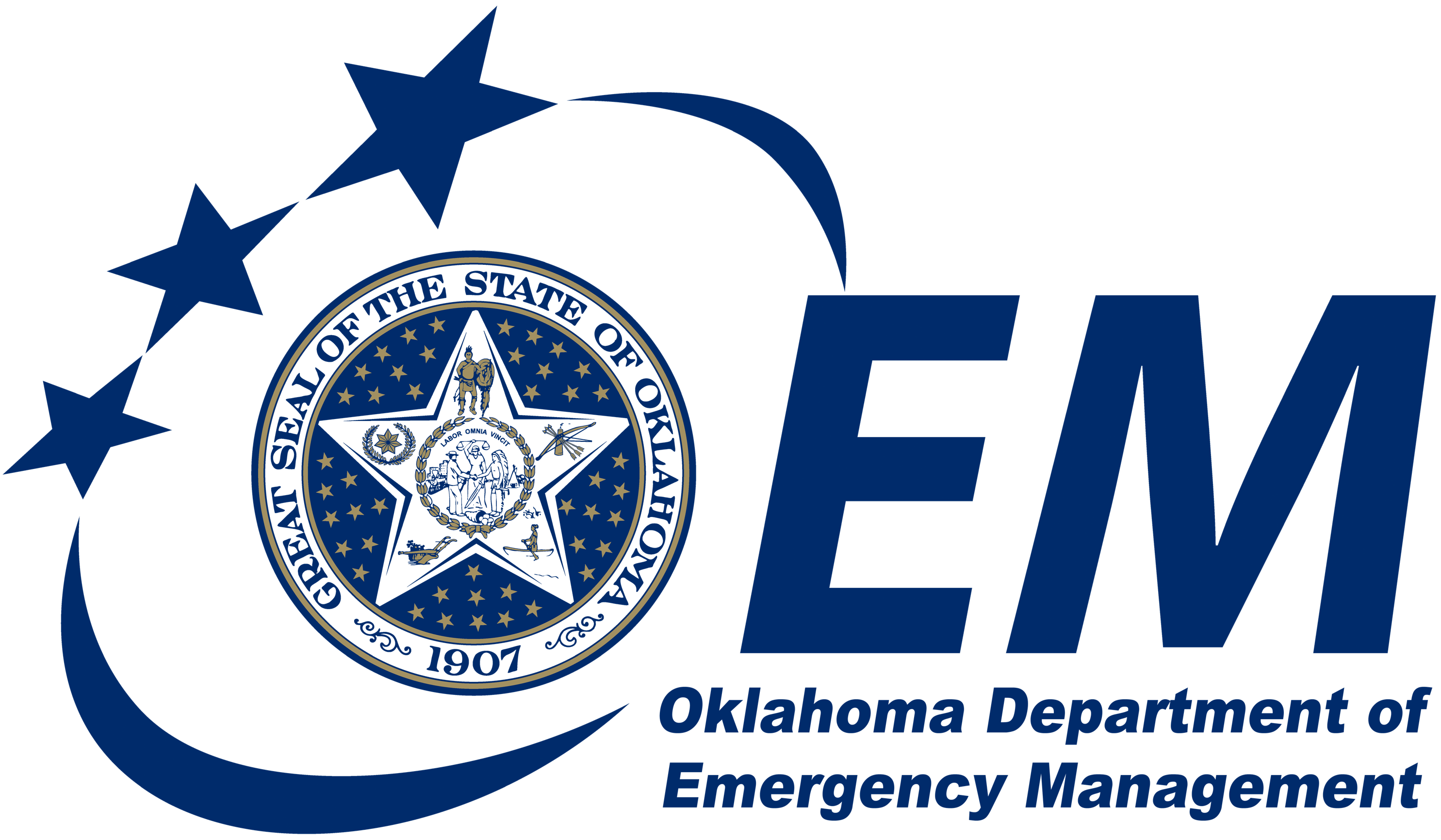SITUATION UPDATE
Oklahoma Department of Emergency Management
Situation Update 1
August 30, 2017 3:30 p.m.
OKLAHOMA SUPPORT FOR HARVEY
State and local officials continue to heed the call/respond to requests to assist neighboring states impacted by the ongoing flooding caused by Tropical Storm Harvey. Officials with the Oklahoma Department of Emergency Management (OEM) are working with FEMA, officials in Texas and Louisiana, and many Oklahoma state, local, tribal and voluntary agencies listed in this update to provide assistance as needed. The State Emergency Operations Center is activated.
STATE OF EMERGENCY
Governor Mary Fallin declared a State of Emergency for Oklahoma so that state, county, and local governments can adequately respond to the mutual aid requests and needs of the Gulf Coast states. Under the Executive Order, state agencies can make emergency purchases and acquisitions needed to expedite the delivery of resources to local jurisdictions.
WEATHER
Tropical Storm Harvey made landfall again in southern Louisiana near Cameron with 45mph sustained winds moving north at 9mph. The primary threat continues to be excessive rainfall across parts of western Louisiana where total amounts greater than 15 inches is possible. Since Harvey is expected to increase speed and move northeast, it should move out of Louisiana by midday Thursday. Primary impacts today are widespread rainfall of 2-5 inches with a few areas near 8 inches.
OKLAHOMA RESPONSE
OEM has been working with the Texas Division of Emergency Management (TDEM) and FEMA Region 6 in Denton to support resource requests from the state of Texas the Interstate Emergency Response Support Plan, a regional mutual aid agreement for Federal Emergency Management Agency (FEMA) Region 6 states, and the Emergency Management Assistance Compact (EMAC). EMAC is a national mutual aid system that allows states to send personnel, equipment and commodities to help disaster relief efforts in other states.
Eight additional swift water teams deployed to Texas this morning from Chickasha Fire, Guthrie Fire, McCurtain County, McIntosh County Fire, Seminole Fire, Shawnee Fire, Tecumseh Fire and Yukon Fire.
The full list of all teams deployed to Texas since Monday is included below:
- Bartlesville Fire Department Swift Water Team
- Broken Arrow Emergency Management
- Bryan County Swift Water Rescue Team
- Cherokee County Swift Water Team
- Cherokee Nation Swift Water Team
- Chickasha Fire Swift Water Team
- Coal County Swift Water Team
- Craig County Swift Water Team
- Grand River Dam Authority
- Guthrie Fire Swift Water Team
- Guymon Fire Swift Water Team
- Mayes County Task Force 1
- McCurtain Swift Water Team
- McIntosh Fire Swift Water Team
- Muscogee (Creek) Nation Emergency Response Team
- Oklahoma City USAR
- Oklahoma Department of Wildlife Conservation
- Oklahoma Highway Patrol
- Pittsburg County Water Rescue Team
- Quapaw Tribe Fire
- Seminole Fire Swift Water Team
- Shawnee Fire Swift Water Team
- Tecumseh Fire Swift Water Team
- Tulsa Fire Department USAR
- Tulsa Police Department Disaster Area Response Team
- Wagoner County Swift Water Team
- Washington County Emergency Management
- Yukon Fire Swift Water Team
OK-IMT, the state Incident Management Team, deployed to Texas earlier this week to provide assistance with resource distribution and other assignments. OK-IMT includes 12 personnel from Moore Emergency Management, Oklahoma County Emergency Management, Oklahoma Highway Patrol, Oklahoma State Department of Health, Oklahoma State University Fire Service Training, Sapulpa Fire Department and Tulsa Fire Department.
Additionally, three OEM staff members are assigned to the TDEM Operations Center and the FEMA Region 6 office in Denton to help coordinate EMAC request and other out of state resources.
The Oklahoma National Guard is responding to another request from the Texas Military Department to send personnel and equipment to support medical evacuations from southeast Texas.
An Oklahoma shelter operations team is preparing to deploy to Shreveport, Louisiana, to manage two shelters for evacuees who have been displaced by Tropical Storm Harvey. The shelters are planned to open later this week and will accommodate at least 3,500 people.
Several Oklahoma EMS agencies have provided units per the Federal request for EMS support. This is an operation through FEMA with contracted EMS agencies.
VOLUNTARY AGENCY SUPPORT
Numerous Oklahoma voluntary agencies are also sending staff and volunteers to support relief efforts in Texas, including the American Red Cross, Children’s Disaster Services, Convoy of Hope, Mercy Chefs, Operation BBQ Relief, the Salvation Army and Southern Baptist Disaster Relief.
Oklahoma Baptist Disaster Relief has sent two shower trailers to Houston and a large feeding unit (45-person, producing 25,000 meals/day) to serve meals at the Houston convention center.
The American Red Cross is supporting responders and family members of VA patients being transported to Oklahoma through the National Disaster Medical System (NDMS). A medical evacuation center opened today at the Will Rogers World Airport.
PLEASE DO NOT SELF DEPLOY
Oklahomans are discouraged from self-deploying to Texas or Louisiana. In most cases, access to the affected areas is extremely limited due to high water. As Oklahoma continues to receive requests for personnel, equipment and supplies, OEM will look to local county and municipal emergency managers to identify the needed resources. OEM is working through the Emergency Management Assistance Compact (EMAC), an interstate mutual aid agreement, to deploy resources to the affected areas.
FIND FRIENDS OR FAMILY
To find friends or family in the affected area, visit www.safeandwell.org.
HOW CAN OKLAHOMANS HELP?
Oklahoma Voluntary Organizations Active in Disaster (VOAD) offers the following tips:
When disaster strikes, the best way to support survivors of emergencies or disasters in Oklahoma is with cash donations to reputable voluntary organizations. Cash donations allow relief organizations or survivors to purchase what they need, when and where they need it. Buying supplies locally helps the local community recover by helping local businesses pay salaries and by keeping tax revenues in the community.
Do not send unsolicited donations of used clothing, miscellaneous items or perishable foods, which must be sorted, warehoused, transported and distributed. This requires more efforts and staffing to manage those resources and takes away from recovery efforts. If you must donate in-kind goods, make certain that they are specifically requested and needed by recognized organizations.
HOW TO VOLUNTEER
For Oklahomans who wish to volunteer in response to Harvey, please visit the websites for the Texas and National Voluntary Organizations Active in Disaster (VOAD) for a list of dozens of faith-based, community, nonprofit and non-governmental organizations that include volunteer engagement as a key component of their operations.
Please be patient and do not self-deploy, as unexpectedly showing up to any of the communities that have been impacted by Hurricane Harvey will create an additional burden for first responders.
###


